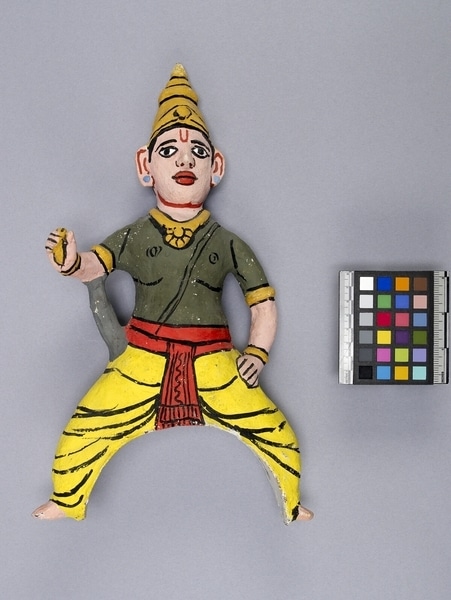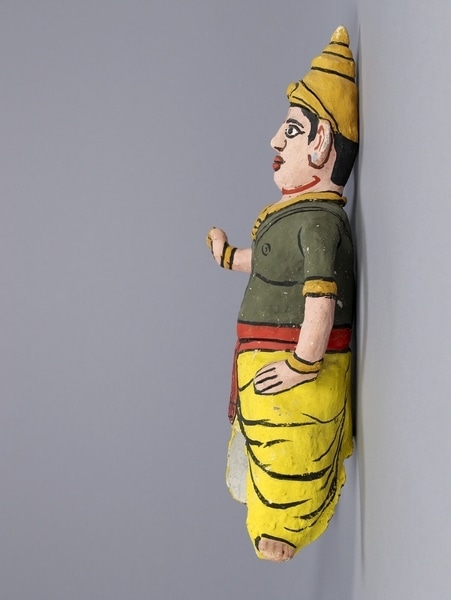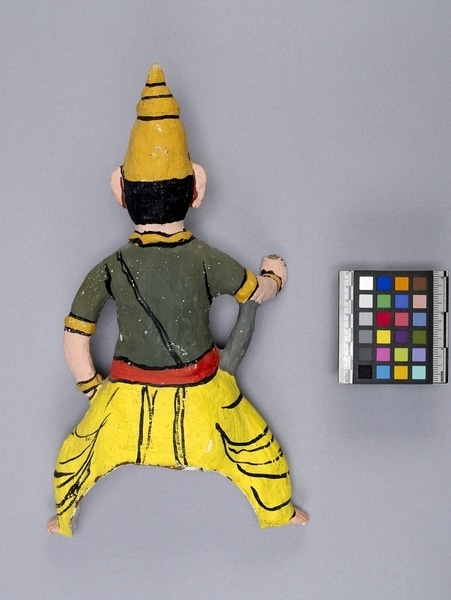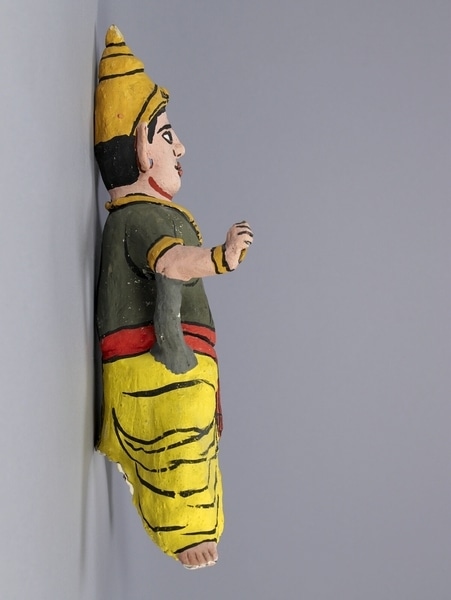Aiyanar Figure Item Number: Eg12 from the MOA: University of British Columbia




Description
Modelled clay figure of a male with legs bowed in a riding pose. The figure is mostly hollow with a large hole through the bottom between the legs. The right arm is upraised clutching the handle of an implement, most of which has broken off. This arm is supported by a strut. The other arm rests on the hip. The figure wears elaborate jewelry, a high headdress, and colourful garments.
History Of Use
Figures of the village gods are made, usually by specific arrangement, by velar potters. These figures are installed during a festival in local village temple, in conjunction with or rather than permanent stone images. The figures are replaced with new ones as often as once a year. The riding stance of this figure would not, except at its installation be worshipped. It would rather be placed on one of the clay horses or bulls offered to the god as a symbol of the god's nightly patrol.
Cultural Context
ritual; religious offering
Iconographic Meaning
Aiyanar: a principal god of village people in south India. His dress and ornament reflects his status as an ascetic and heroic king in in the traditional fashion. He patrols the village boundary at night and intercedes in numerous important problems. The fork-like vertical symbol on the forehead indicates an association with the vaisnava system of worship.
Item History
- Made by K. Muthusamy Velar (Maker) in Madurai, Tamil Nadu, India during February 1975
- Owned by Stephen Inglis before November 1975
- Received from Stephen Inglis (Seller) and Unknown (Funding source) during November 1975
What
Who
- Culture
- South India
- Creator
- K. Muthusamy Velar (Maker)
- Previous Owner
- Stephen Inglis
- Received from
- Stephen Inglis (Seller) and Unknown (Funding source)
Where
- Holding Institution
- MOA: University of British Columbia
- Made in
- Madurai, Tamil Nadu, India
When
- Creation Date
- during February 1975
- Ownership Date
- before November 1975
- Acquisition Date
- during November 1975
Other
- Item Classes
- ceramics; carvings & sculpture
- Condition
- good
- Accession Number
- 0400/0003